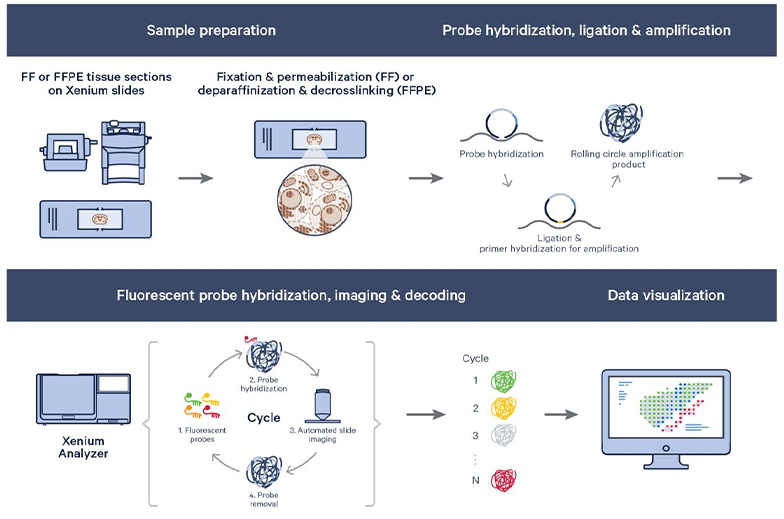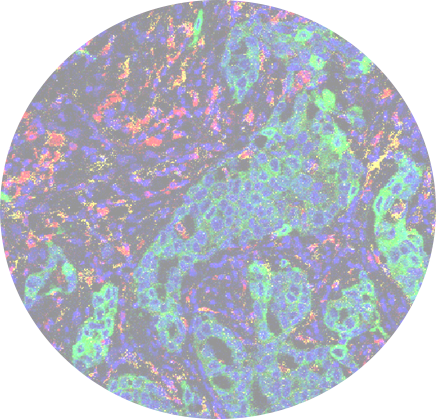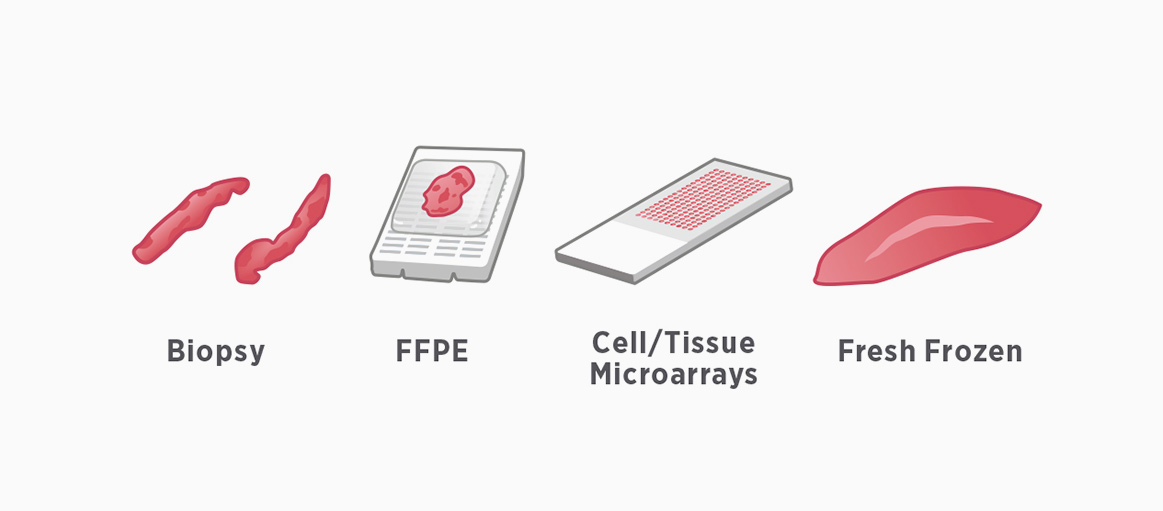
Xenium technology adsorbs a DNA probe to the location of the target mRNA on the slice by hybridizing an in situ nucleic acid probe to the slice, coupled with an mRNA-dependent DNA ligation reaction. Hybridizable sites are increased by rolling loop replication of the probes. The samples are then hybridized by multiple rounds of multicolor fluorescently labeled oligonucleotides, and the spatial fluorescence signals of each round are recorded with a microfluorescence scanner. The spatial distribution of the target mRNA is detected by the color information of the spatial fluorescence signals in multiple rounds.

Service Advantage


COPYRIGHT©Infinity Scope Multi-Omics Biotechnology Co. Ltd., All rights reserved. 浙ICP备2023015471号-1